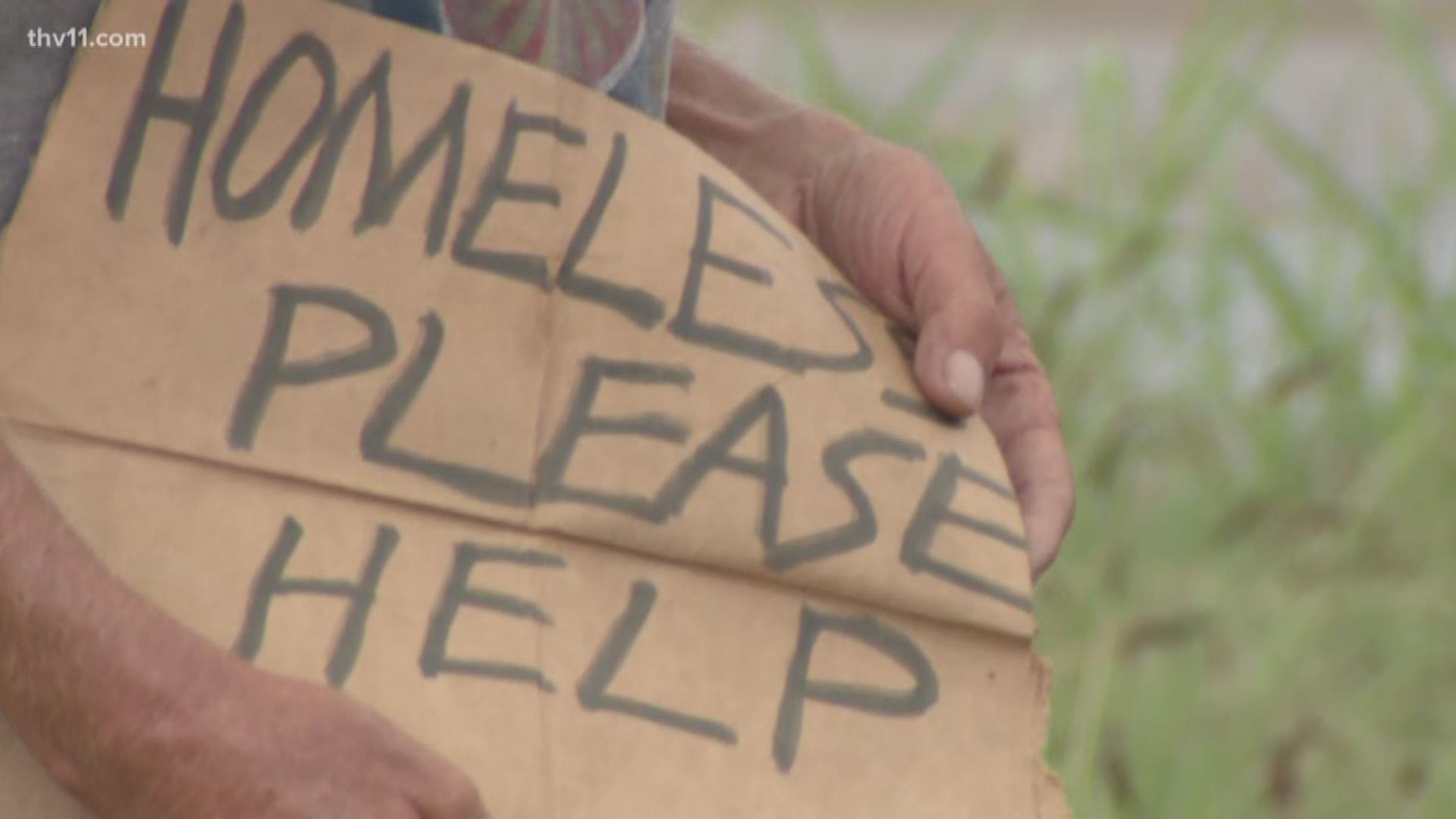Local homeless advocates are closely watching what is happening in northwest Arkansas.
Fayetteville’s planning commission approved a new kind of housing option Monday to get people off the streets. It will allow a non-profit to build a neighborhood of 20 tiny homes for use as transitional housing for homeless, with five years to prove it helps people find stabilize their lives.
One of the most prominent voices for the homeless around Little Rock said he wishes the same thing could happen in central Arkansas.
“It gets shot down, and it’s not taken seriously here,” Aaron Reddin said. “So, it’s encouraging to me to see that there are Arkansans that do have enough compassion to take that seriously, and say, you know what? We can’t fix everything right now, but what we can do right now is allow you to exist somewhere.”
Reddin, who founded the non-profit The Van, has fought with city leadership in the past over issues such as whether permits should be required for group feedings. He said Tuesday that most of the homeless people in the Little Rock metro area sleep outside every night, rather than in a shelter, so a camp or community for them would help in many ways.
“What these do, are, it basically allows people to exist, without code enforcement coming around, moving you from one patch of woods to the other,” he stated.
The proposal from ServeNWA for the City of Fayetteville is based on a program in Austin, Texas, called Community First! Village. It includes a mix of trailers and tiny homes, with roughly 200 residents. They all pay rent ranging from $220 to $400 a month and many of the residents have jobs within the community. It offers permanent housing, so residents may stay the rest of their lives if they want. Mobile Loaves and Fishes, the group that developed it, plans to spend $18 million to expand it by another 350 homes, according to a spokesman. Once completed, it will have room for nearly 25 percent of Austin’s homeless population.
Reddin, however, believes central Arkansas is not at a place to allow something as large in scale and scope as Community First! Village.
“Big, elaborate plans are great,” he said. “Five hundred and fifty people are outside in our city right now that are looking at winter, that are looking at code enforcement, that are looking at the police and wondering, ‘What’s going to get me first?’”
He mentioned that having a couple of organized tent camps around the city might be a more practical idea. He thinks donors would be willing to pay for the land, insurance, and utilities, and volunteers would make sure they operate safely. Reddin said he would only need help from city leaders to choose feasible locations.
“It’s not ideal,” he admitted. “Yeah, we’d much rather you have an actual roof over your head. But you live in this tent right now, so let’s at least let you exist.
“If you can get a good night’s sleep and actually have somewhere that you can do proper hygiene and things like that, then your odds of getting beyond your homelessness and rehoused somewhere are obviously increased.”
Reddin said he would prefer to create two or three campsites around the metro area (near the airport, near southwest Little Rock, and on the north side of the Arkansas River) that could accommodate 35 to 50 people each. That would be enough to give a third of the area’s unsheltered homeless a place to go.
Aside from the safety of the homeless and the attractiveness of downtown to tourists, Reddin mentioned tax savings as a potential benefit of establishing long-term homeless camps.
“I’d really like to know,” he said, “how many tax dollars in Little Rock are spent on code enforcement going around and booting homeless people from one patch of woods to another. You’re evicting them, knowing they have no other options. Well, they’re going to end up in this other patch of woods over here, and then you’re going to pay someone to come over here and evict them again. And it’s just a continuous cycle. So, what’s that costing the city?”
Reddin also said he is more focused on the immediate needs of the homeless than on planning camps. Winter’s approach means homeless people need to have blankets and warm clothing. They also need more places to seek refuge from extreme cold. He said The Van opens emergency shelters at Second Baptist Church Downtown in Little Rock and Levy Church of Christ in North Little Rock, but he hopes to partner with additional churches to provide space to those in need.
The emergency shelters open when the temperature falls below 25 degrees on dry days, or at 32 degrees when there is also wintry precipitation.

